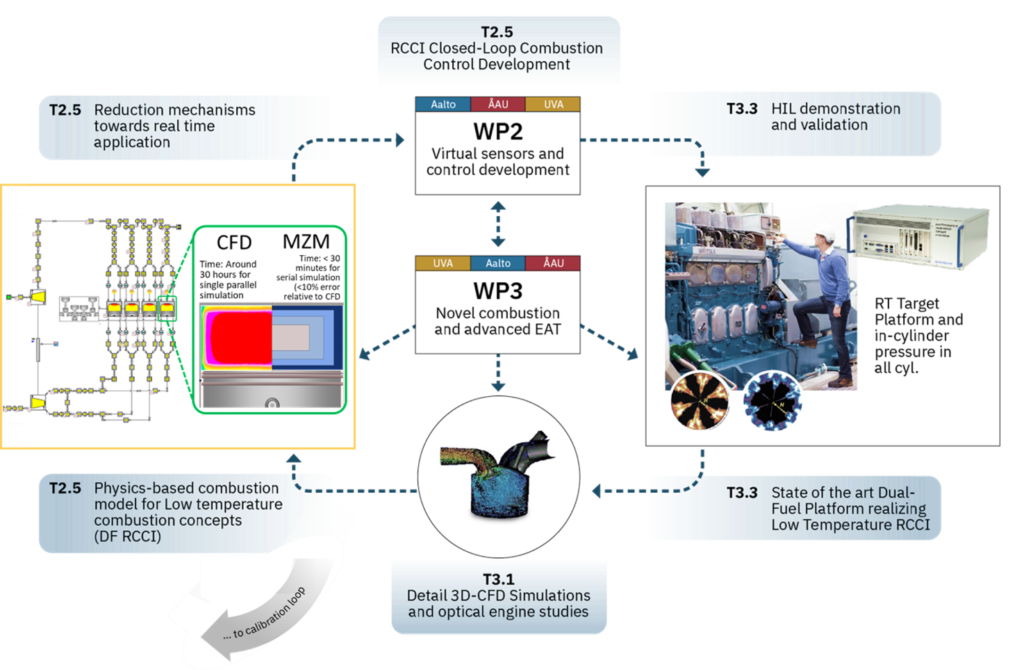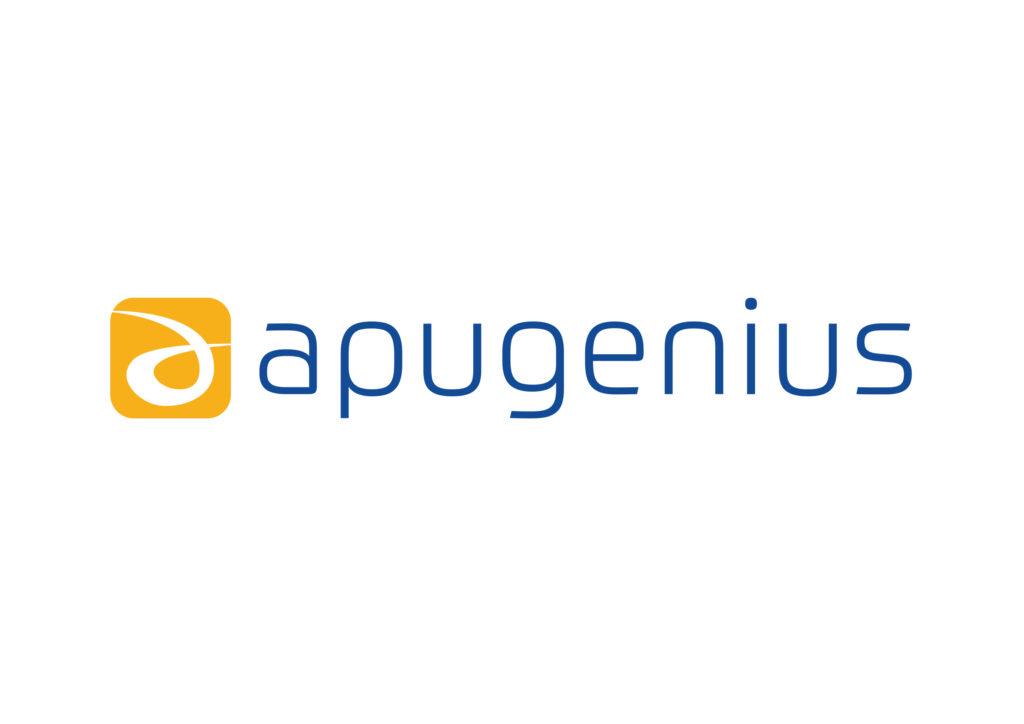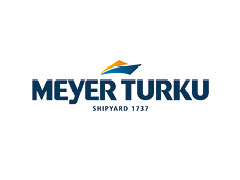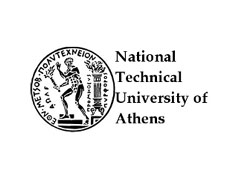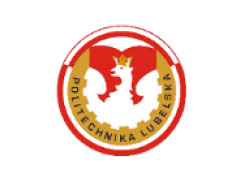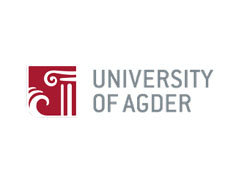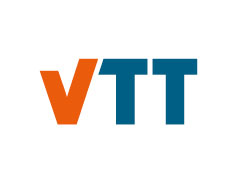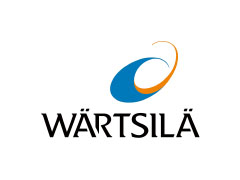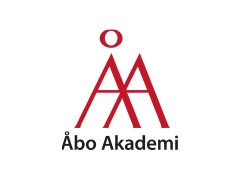In contemporary combustion engines, large number of independent control parameters creates a large calibration burden. This calibration challenge, combined with the high infrastructural costs of demonstrators, often deter development of the concept. Moreover, the calibration process becomes more complex when these engines are used in different applications, such as a variety of vehicle types and working in different environmental or operating conditions. Each application may require its own set of calibrations, further adding to the calibration burden. For state-of-the-art Reactivity Controlled Compression Ignition (RCCI) engines, quasi-dimensional models, combined with reaction kinetics, enable quick and accurate simulations. These predictive simulation codes are often referred to as multizone models (MZMs). Regardless of their level of detail, MZMs can run much faster than typical computational fluid dynamic (CFD) codes, with a difference in orders of magnitude.
The dynamics of an engine’s airpath, including components like the intake manifold and exhaust system, significantly impact performance and simulation accuracy. Neglecting airpath dynamics can lead to errors in simulations, emphasizing the need to consider these factors for reliable results. Utilizing one-dimensional engine simulation toolchains, such as GT-Power, is gaining popularity due to their balanced approach between accuracy and computational efficiency. Recent studies coupling combustion models with GT-Power have explored lean-burn dual fuel combustion, revealing the complex interplay between air-path constraints and emission reduction potential. This highlights the importance of comprehensive modeling techniques to enhance understanding of intricate engine processes, refine emissions reduction strategies, and advance the field of internal combustion engine research and development.
The concept of coupling a physics-based, chemical kinetic MZM code with GT-Power is still relatively new. In this particular study, the UVATZ MZM (University of Vaasa Advanced Thermochemical multi Zone model), is globally coupled with GT-Power as an external combustion object. This coupling allowed for a combined simulation capturing the interactions between the chemical kinetics and the air-path dynamics. The coupled version is then validated with experimental data to assess its accuracy and reliability. These include six cases covering a broad range of operating parameters, to ensure its robust performance and applicability in real-world scenarios.
The successful coupling of the physics-based chemical kinetic UVATZ with GT-Power can yield a plethora of output results, including thermodynamic properties and detailed species concentrations. These outputs can open up new research opportunities in areas such as engine aftertreatment modeling, even in multi-cylinder airpath applications. This enhancement in simulation capabilities allows for a more comprehensive analysis of engine performance and emissions, and greater insight into the interactions between different engine components. This advancement can pave the way for further investigations into complex engine processes, contributing to the advancement of the field of internal combustion engine research and development.
The obtained results from all the parameters showed error margins never greater than 5% of the experimental results, and achieved within the target 5 minutes per cycle simulation. The integration of the external combustion code (UVATZ) into the GT-Power airpath offers a global approach adaptable to different reciprocating engine designs. By capturing airpath flow dynamics, the initial conditions at IVC are updated at each cycle, resulting in a higher accuracy outcome in the integrated model. The combined model enhances pressure trace reproduction, with a significant reduction in RMS error (0.99 bar) compared to standalone UVATZ results. This improvement translates into better indicators for IMEP and Pmax, along with enhanced predictions for intake and exhaust valve mass flow rates. Convergence in combustion model results is achieved after a moderate number of cycles through IMEP and Pmax monitoring. The coupling of UVATZ in GT-Power facilitates efficient handling of closed cycle and gas exchange phases using appropriately matched stiff and Runge-Kutta solvers.
In the realm of future research directions, several areas hold promise for further exploration. First, delving into CFD-validated turbulence and diesel stratification could provide deeper insights into combustion dynamics, enabling more accurate predictions and optimizations. Additionally, focusing on the development of a rapid multi-cylinder UVATZ-GT coupling could yield efficient simulations across complex engine configurations. Exploring Exhaust Aftertreatment (EAT) coupling and system-level optimization stands as an important step towards comprehensive emission reduction strategies. Moreover, the creation of a reduced-order model for real-time applications and modeling could enable practical implementation in various engine-related systems, contributing to improved efficiency and control. These avenues collectively promise to advance our understanding of combustion processes, enhance simulation capabilities, and facilitate the development of more efficient and cleaner internal combustion engines.
The research endeavor has been implemented by a collaborative team comprising Alireza Kakoee, Aneesh Vasudev, and Maciej Mikulski from the School of Technology and Innovation at the University of Vaasa, and Ben Smulter and Jari Hyvonen from Wärtsilä Marine Solutions,+ Engine Research and Technology Development division. The research was carried out as part of Clean Propulsion Technologies project Work Package 3 “Novel combustion and advanced aftertreatment“.
A recently published conference paper on the topic can be found here.
